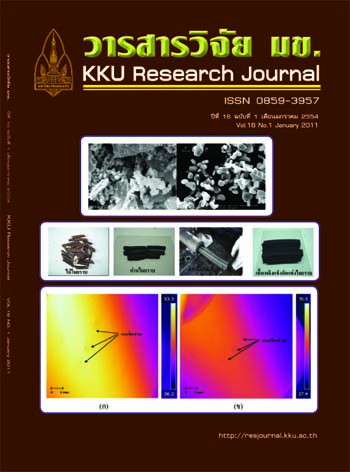The effects of relative humidity and gaseous ammonia on the sorption of nicotine onto indoor materials
Main Article Content
Abstract
Sorptive interactions of constituents of environmental tobacco smoke with indoor surfaces can extend the time that occupants are exposed to these organic pollutants. This research was to investigate the overall sorptive capacity of stainless steel, curtain, and carpet for nicotine at 0, 50, and 90% relative humidity (RH). Experiments were conducted using a 10-L stainless steel chamber. Nicotine was introduced into the chamber by ash evaporating of 50-μL liquid nicotine. The air exchange rate of the test chamber was controlled at 0.012 per hour. Kinetic sorption parameters were determined by tting a mass balance model to experimental results using non linear regression. The in uence of gaseous ammonia on the sorption of nicotine on carpet was also studied. Results show that the nicotine capacities of carpet and curtain were of similar magnitude and were 2-3 orders of magnitude higher than stainless steel. Increasing the RH from 0 to 90% caused an increase in the surface capacity by 122% for stainless steel, 46% for curtain, and 53% for carpet. In the presence of 20- and 40-ppm ammonia, the nicotine capacity for carpet decreased by 15-35%.


